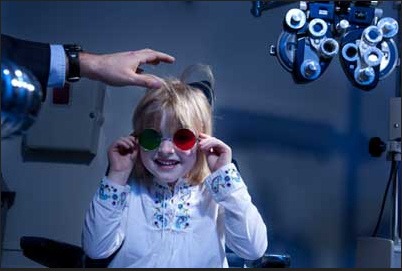 Vision testing and hearing tests are done on a newborn baby, and routinely at check-ups over the next few months and years of the child’s life. As the children get to preschool and school ages, they still need to have tests done to ensure that everything is working as it should be.
Vision testing and hearing tests are done on a newborn baby, and routinely at check-ups over the next few months and years of the child’s life. As the children get to preschool and school ages, they still need to have tests done to ensure that everything is working as it should be.
Since they may not be able to read, or understand certain things yet, there are actually different methods for performing vision testing for children.
It is important for children to have routine eye tests done to make sure there aren’t any problems developing. Many of the problems with vision in children can be treated if found early enough. But, if they are left untreated, they can end up suffering with some vision loss or even complete blindness.
Common Visual Problems Found in Children
Some of the problems that will be tested for in children include:
- Strabismus – Strabismus occurs in approximately 4% of children. Most often the cause is unknown but sometimes it can be controlled with glasses or treatment of reduced vision in one of the eyes with patching or eye drops. It is categorized by the way the eyes misalign – inward, outward, upward or downward. Some children will also only suffer from it when they are tired, or if one eye is covered. If your child’s pediatrician says that his/her “eyes are out of line” this means the physician sees a misalignment of the child’s eyes. If this is true the eyes will not be working together. Your child should be seen for a complete eye examination by a pediatric ophthalmologist as soon as it can be performed.
- Amblyopia – This condition is basically a decreased vision in one eye – usually due to another condition, including strabismus, congenital cataracts, etc.
- Refractive Errors – These are defined as myopia (nearsightedness) and hypermetropia (farsightedness).
- Some of the tests that are done to check children’s vision are a rolling ball test, reading Snellen charts or logMAR cards, wiggly finger test and Ishihara color vision tests, as well as many other interactive tests which can determine a child’s vision.
Vision Testing Birth to Age 5
Up to 2 Years: The rolling ball test is generally performed on babies and children up to about the age of 2. It is used to determine focus and sharpness of eyesight. It basically consists of rolling small white balls across the floor to check their range of vision, and how small of an object they can detect. Similar tests can be done, such as reaching for different sizes of blocks to see if they can see them. Older children will be asked to count the number of fingers being held up.
After the age of 5: Children will be able to read Snellen charts, or logMAR cards – which are the charts with decreasing sizes of letters. They will be held at a distance, and asked to read each line that they can see.
In order to test range of movement of each eye in younger children, they will be shown an interesting object that is moved to eight different positions to test how well each eye is able to follow the movement, and how far the movement of the eye is able to reach.
Vision Testing for Children Over 5
Older children, over the age of 5: Will often do what is called the wiggly finger test. This is done by the examiner bringing a wiggly finger in closer to each eye, gradually to see how well it follows the movement.
Children 11 or above: Tests for color blindness are not usually done in younger children, but may be preformed now if there is to believe there is a problem. These tests use what is referred to as the Ishihara color vision tests. These consist of 2 different colors of dots which the child will be required to recognize.
If there is no problem with vision, the child will be able to see the number or letter that is made up of the dots, which are highlighted. If the child cannot see a picture in the highlighted dots, they may not be able to distinguish between the colors. Further testing might be advised.
The methods for vision testing for children will be different than that of adults, simply because of the need to make them comfortable, and to be sure they understand what it is they are required to do. But, it is important to have regular testing, to make sure the child’s vision is not suffering, and that there are no serious abnormalities.
CHILDREN’S VISION RESOURCES
- US Preventive Services Task Force: Screening for Visual Impairment in Children Ages 1 to 5
http://www.uspreventiveservicestaskforce.org/uspstf11/vischildren/vischildrs.htm - KidsHealth: Your Child’s Vision
http://kidshealth.org/parent/general/eyes/vision.html - American Association for Pediatric Ophthalmology and Strabismus: Vision Screening
http://www.aapos.org/terms/conditions/107 - Eye Care American the Foundation of the American Academy of Opthalmology: Home Eye Test
http://www.aao.org/eyecare/tmp/home-eye-test.cfm - National Guideline Clearinghouse: Summary
http://www.guideline.gov/content.aspx?id=25423 - American Family Physician: Pediatric Vision Screening for the Family Physician
http://www.aafp.org/afp/1998/0901/p691.html - The American Academy of Ophthalmology’s EyeSmart Campaign (www.geteyesmart.org).

